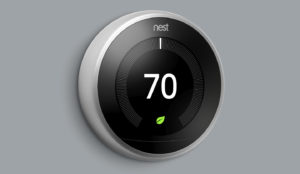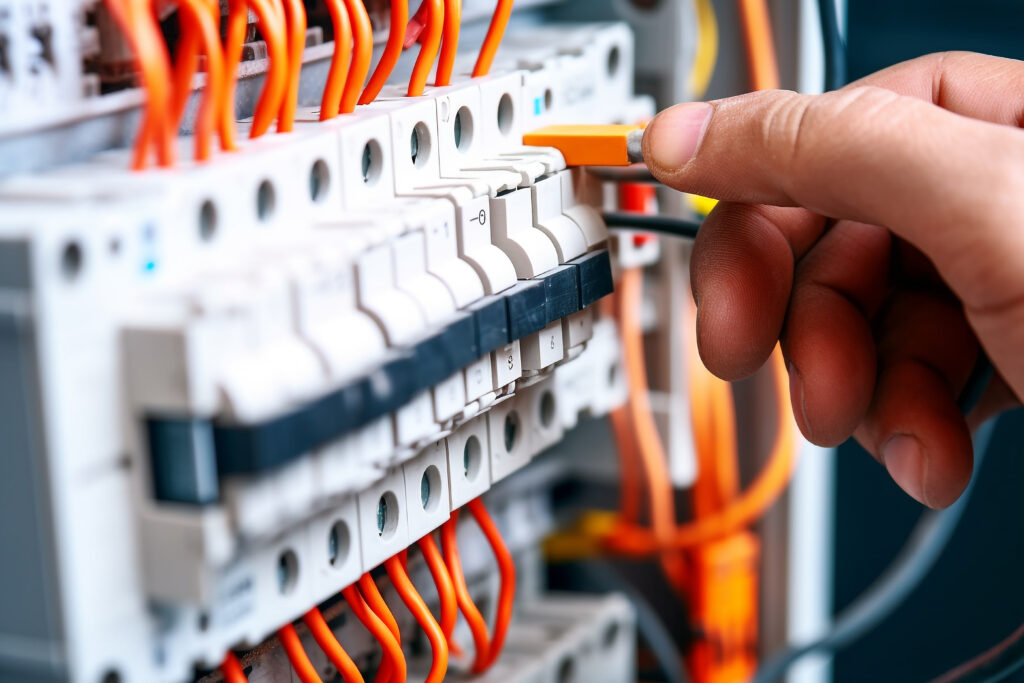
The Google Nest Thermostat is a great option for an in-home thermostat. It is very comparable with other Google products and can be controlled by your phone or mobile device.
Does a google nest thermostat need batteries?
There are two different models for the Google Nest. The first option is the Standard Google Nest Thermostat. With this model, it is powered by the home through the HVAC wiring. There is also a backup power source that comes from 2 AAA alkaline batteries. The second model is the The Google learning Thermostat. This model is powered by a built-in rechargeable lithium-ion battery.
Do I need to change the batteries in a Nest thermostat?
If you have the standard Google Nest thermostat, yes, you will want to change the backup batteries. However, you will not need to change them at any regular intervals. It may be best to keep a pair of AAA batteries on hand. You can always check the Google Nest App to check on the power scores of your device. The Google Nest Learning Thermostat does not require replacement batteries as the backup battery supply is always being recharged automatically.
Powering the Google Nest Thermostat
There are two primary models of the Google Nest Thermostat: the Standard Google Nest Thermostat and the Google Nest Learning Thermostat. Both of these models have distinct methods of receiving power, and their battery requirements vary accordingly.
- Standard Google Nest Thermostat:
- This model is typically powered directly by your home’s HVAC system wiring. It uses what is known as the C-wire (common wire) to supply continuous power. If your home does not have a C-wire, the Nest can still function using your HVAC system’s other wires (like the heating or cooling wire), drawing small amounts of power from them to keep the device running.
- In addition to the wiring power, the Standard Google Nest Thermostat includes a backup power source consisting of two AAA alkaline batteries. These batteries serve as a fallback in case the wiring loses power or the system needs to keep minimal operations running.
- Google Nest Learning Thermostat:
- Unlike the Standard model, the Google Nest Learning Thermostat features a built-in rechargeable lithium-ion battery. This battery recharges itself while the device is connected to the HVAC system’s wiring. The lithium-ion battery serves as both a primary power backup and a source of energy storage to keep the thermostat running if there is a brief interruption in the HVAC system’s power supply.
- The built-in battery in this model does not require manual replacement. Since it continuously recharges, homeowners do not need to worry about changing batteries at any point in the device’s lifespan.
When Should You Replace the Batteries?
If you own the Standard Google Nest Thermostat, there will be times when the AAA batteries need to be replaced. Fortunately, this is not something you need to do frequently. The thermostat is mainly powered by the HVAC system wiring, so the batteries are only used in limited situations, such as temporary power interruptions.
Some indications that it may be time to change the batteries in your Standard Nest Thermostat include:
- The thermostat displays a “low battery” warning on the screen.
- You notice the thermostat screen is unresponsive or has gone blank.
- The HVAC system is not turning on or functioning as expected.
You should keep a spare pair of AAA batteries on hand so you can quickly swap them out when the need arises. While there is no fixed timeline for replacing the batteries, regularly checking the device status on the Google Home app or the Nest app will keep you informed about your thermostat’s power levels.
For the Google Nest Learning Thermostat, you don’t need to replace the battery. The rechargeable lithium-ion battery should last the lifetime of the thermostat, provided it remains connected to the HVAC system.
Why Does the Nest Thermostat Have Batteries?
You may wonder why the Nest Thermostat even needs batteries, given that it is connected to your HVAC system for power. Batteries serve as a critical backup mechanism, ensuring that your thermostat can continue operating even if there is a brief disruption in the main power supply. Here are a few reasons why having a battery backup is beneficial:
- Power Outages: During a power outage, the thermostat needs enough power to communicate with your HVAC system once the electricity returns. The battery provides just enough power to help maintain system settings and to resume normal functions once power is restored.
- Wiring Issues: Not all homes have a C-wire, and in those cases, the Nest Thermostat uses power from other wires, which may not always be consistent. The battery ensures that the thermostat remains functional even when there’s an issue with the primary power supply.
- Wi-Fi Connection: The battery allows the thermostat to maintain a connection to your home’s Wi-Fi network and continue communicating with the Nest app, which can be important for remote control and monitoring. If the device lost power entirely, you’d have to reset your preferences once the power came back.
Monitoring Battery Levels with the Nest App
One of the most convenient aspects of owning a Nest Thermostat is that you can monitor its performance, including its battery levels, directly through the Google Home or Nest app. This allows you to stay ahead of any potential power issues before they cause your system to malfunction.
In the event that your batteries are running low, the app will notify you, giving you time to replace them or address any wiring issues before the thermostat loses functionality.
Google nest thermostat installation in Morehead City, NC
If you are unsure about which thermostat to use, we are here to answer your questions! At Coastal Home Services we are dedicated to making your home as comfortable as possible. Let us evaluate your space and help set you up with the most cost effective and efficient product we can.


